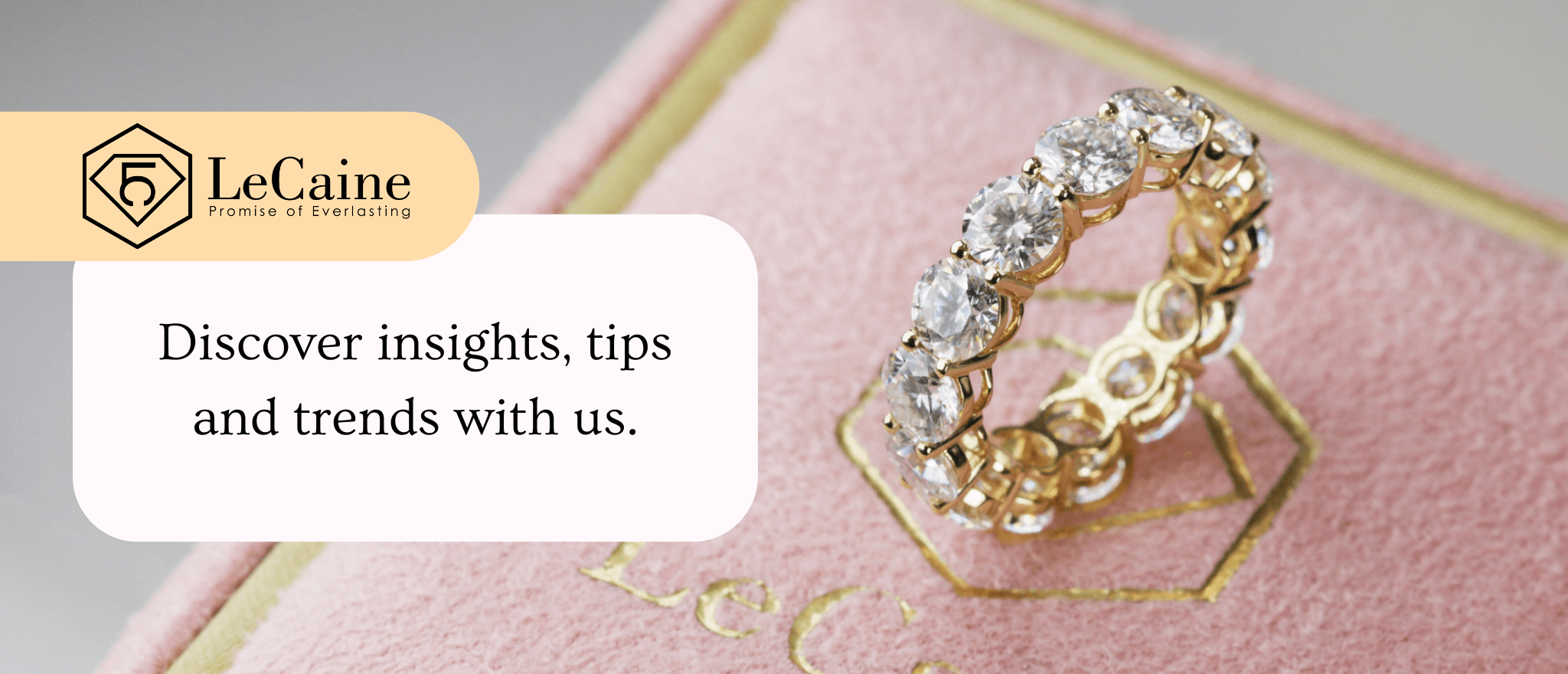
Blogs - LeCaine Gems
27
Oct
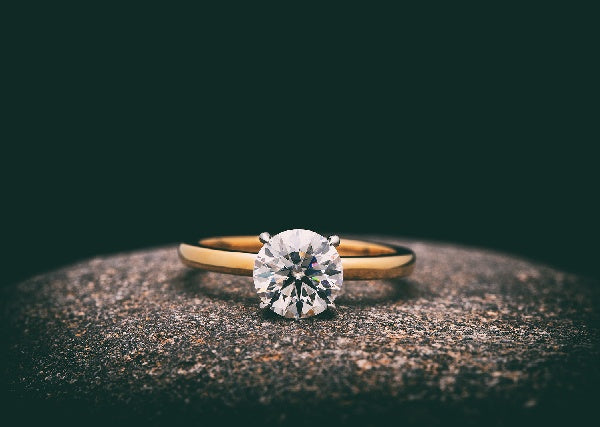
What It’s Like to Work With a Jeweler on a Custom Design
Picture this: you walk into a jewelry studio and the sparkle of gemstones catches your eye as your ideas slowly take shape before your eyes. That magical process is what makes custom jewelry so captivating. Unlike off-the-shelf pieces, a custom design tells your story, reflects your personality and becomes a one-of-a-kind treasure. If you’ve ever wondered what it’s like to collaborate with a jeweler, here’s an insider’s guide to the journey of creating a piece that is uniquely yours.
The Allure of Bespoke Jewelry
Bespoke jewelry in Singapore has become increasingly popular and it’s easy to see why. A personalized piece carries an emotional depth that mass-produced jewelry simply cannot match. It’s about crafting something that fits perfectly with your style and lifestyle, and it often becomes a family heirloom, passed down through generations. From choosing the perfect stone to deciding the ideal metal, every detail is carefully considered to ensure the piece tells your story.
The thrill of designing your own jewelry comes from the freedom to explore creative ideas. You’re not limited by trends or what’s currently in stores. Instead, your piece is a direct reflection of your vision, values and personal aesthetic.
Step 1: Book a Consultation
The journey begins with a consultation. This is your chance to share your story, vision and inspirations. During this session, you’ll discuss your style preferences, choice of materials, gemstone options and budget. Some clients may bring sketches, photos, or heirlooms for reference, while others simply describe their ideal piece. The goal is to ensure your jeweler understands exactly what you want before the design process begins.
At this stage, you can also explore ethical and sustainable options, such as a brilliant lab-grown diamond, which offers a stunning sparkle with a smaller environmental footprint.
Step 2: Make a 50% Deposit
Once you’re ready to move forward, a 50% deposit secures your custom piece and allows the team at LeCaine to source the finest materials for your creation. This step ensures that your design receives the attention and quality craftsmanship it deserves, with the best metals and gemstones selected to bring your vision to life.
Step 3: Sketch or Rendering
After securing the deposit, the designers at LeCaine will create a detailed sketch or digital rendering of your custom piece. This step is all about visualization: it allows you to see your ideas take shape in a tangible form and ensures the design matches your vision before production begins. You’ll have the opportunity to review the sketch, request tweaks and approve the final concept, giving you confidence that your jewelry will be exactly as imagined.
Step 4: Crafting Your Piece (4–8 Weeks)
Once the design is approved, skilled artisans begin crafting your piece. This stage typically takes 4 to 8 weeks, depending on the complexity of the design. Every curve is carefully formed, every stone expertly set and every surface polished to perfection. During this time, the transformation from concept to reality is a meticulous, hands-on process.
By the time your jewelry is complete, you’ll hold in your hands a one-of-a-kind creation that reflects your personality, style and story—a piece you’ll treasure forever.
Tips for a Smooth Collaboration With Your Jeweler
Working closely with a jeweler can be an incredibly satisfying experience. Here are some tips to make the process seamless:
1. Be Open About Your Vision – Share all inspirations, preferences and ideas to help your jeweler fully understand what you want.
2. Trust Their Expertise – Designers and artisans often have insights on durability, stone placement and design balance that enhance your piece.
3. Ask Questions – Stay informed at every stage, from material sourcing to sketches, so there are no surprises.
4. Enjoy the Experience – This is a creative collaboration, so take the time to enjoy the journey and celebrate each step.
Conclusion: Wearing a Piece That Truly Reflects You
Custom jewelry is more than just an accessory—it tells your story, embodies your style and becomes a treasured heirloom. From the first consultation to holding your finished piece, the process is personal, collaborative and unforgettable.
At LeCaine, you’ll find a curated collection of customizable designs and a team dedicated to making your dream jewelry a reality. Whether you’re creating a one-of-a-kind engagement ring, a meaningful gift or a statement piece for yourself, LeCaine ensures the journey is seamless and inspiring. Start your bespoke jewelry adventure today and wear something that is truly yours.
24
Oct
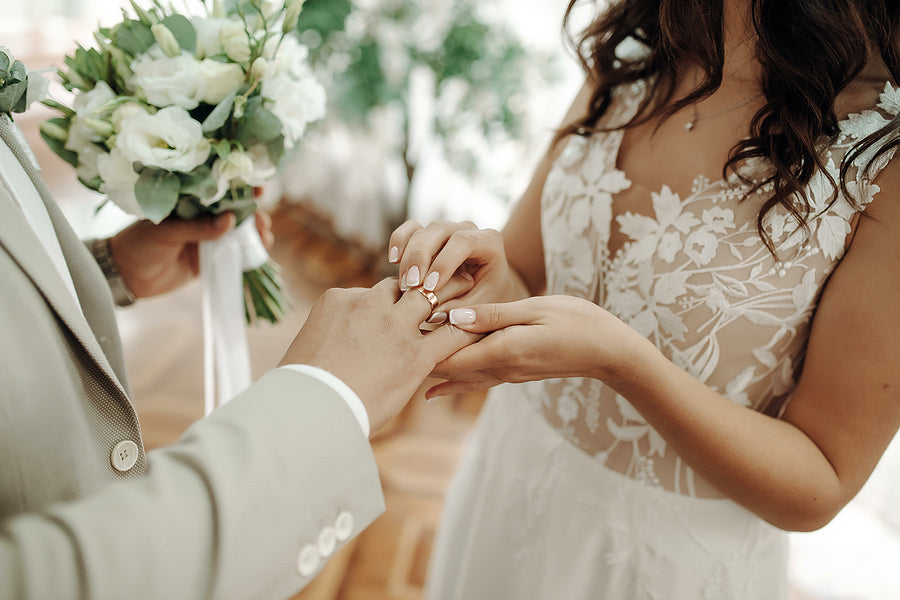
LeCaine Featured on Honeycombers: Love in Every Ring
We’re over the moon to share that LeCaine Gems has been featured in The Honeycombers’ “The Ultimate Wedding Ring Buying Guide in Singapore.”
This thoughtfully written guide isn’t just another article about jewelry. It’s a heartfelt companion for couples as they step into one of the most meaningful chapters of their lives: choosing the rings that will symbolize their love story.
We’re deeply grateful to The Honeycombers team for including us and giving us the opportunity to share how thoughtful design, personal stories and ethical choices come together to create timeless pieces.
A Journey That Goes Beyond Jewelry
Choosing wedding rings is rarely just about finding something that looks good. For many couples, it’s a deeply emotional process filled with excitement, a few nerves and a whole lot of meaning.
What makes this guide so special is its warmth. It doesn’t just offer technical tips; it guides couples through the emotional side of the decision too. It explores real questions couples ask every day:
How do we find a ring that feels like us?
What style will hold its meaning 10, 20, or 50 years from now?
How can we choose something beautiful and also responsible?
When it comes to understanding the 4Cs, which is the most important factor?
These are the kinds of questions we hear in our showroom all the time and we love helping couples find the answers.
Our Perspective in the Guide
In the article, our co-founder and creative director, Ashley LeCaine, shared insights from years of working closely with couples to bring their vision to life. For her, designing a ring isn’t just about the stone or the setting; it’s about understanding the story behind it.
Every love story is unique. Some couples know exactly what they want from the start, while others are exploring options together for the first time. What matters most to us is creating a space where they can express themselves openly without pressure.
The article also shines a spotlight on how values are shaping modern jewelry choices. Increasingly, couples are drawn to lab-grown diamonds, seeing them as a way to combine timeless elegance with a commitment to ethical and sustainable practices.
A Classic That Never Fades
While the guide provides practical tips for choosing the perfect ring, we often see couples at LeCaine drawn to classic styles that stand the test of time. One enduring favourite is the solitaire ring in Singapore.
Its clean lines, single stone and understated beauty make it a timeless choice for proposals and weddings alike. What couples love most is how it feels personal yet effortlessly classic — a design that can be worn for a lifetime and passed down for generations.
Modern Love, Thoughtful Choices
One of the most meaningful trends captured in The Honeycombers’ guide is how couples today are making more intentional choices. They want to know where their jewelry comes from. They care about craftsmanship. They’re looking for designs that reflect their values as much as their style.
This shift is why we’re so passionate about lab-grown gems. They allow couples to embrace exceptional beauty while choosing a path that’s kinder to the environment. It’s love, expressed with intention.
Every Ring Tells a Story
Every time a couple walks through our doors, they bring a story with them. Some are shy, some are beaming, some arrive together with a shared vision and some come alone, ready to plan the perfect surprise. But the moment when they find the ring? That’s always magical.
We’ve witnessed quiet tears, excited laughter and joyful disbelief as dreams turn into reality. That’s why this feature means so much to us — it isn’t just about jewelry, it’s about people and the moments they’ll never forget.
A Heartfelt Thank You
We’re incredibly grateful to the wonderful team at The Honeycombers for including LeCaine in their wedding ring buying guide. It’s an honor to stand alongside other trusted voices and contribute to a story that celebrates love, craftsmanship and modern values.
Read the full article here and discover thoughtful insights, expert tips and inspiration to guide your own ring-buying journey.
And to every couple who has trusted us with your engagement and wedding rings — thank you. Your love stories inspire everything we create and we can’t wait to help even more couples find their perfect forever piece!
22
Oct
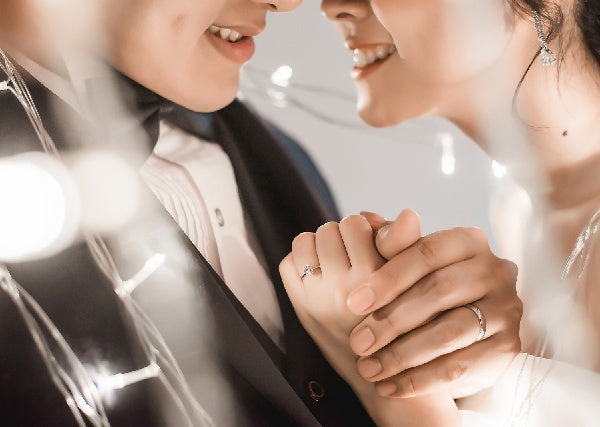
Minimalist Brides: The Beauty of 1-Carat Diamond Rings
Some moments don’t need to shout to be unforgettable and the same is true for engagement rings. For brides who value simplicity and thoughtful design, choosing to buy a 1-carat diamond ring offers just the right amount of sparkle—noticeable, yet never overwhelming. It’s a piece that celebrates clarity, refinement and everyday wearability, making it a favorite for women who want jewelry that feels as natural as it looks stunning.
Minimalist brides often think about more than just the visual impact of a ring—they consider how it fits into their lifestyle, wardrobe and even values. Choosing the right ring is a way to express personality quietly, with pieces that feel like a natural extension of oneself.
Why Minimalist Brides Love 1-Carat Rings
Minimalist brides are drawn to jewelry that feels personal rather than flashy. A 1-carat diamond strikes the perfect balance: it’s enough to catch the light, enough to turn heads, yet small enough to feel effortlessly wearable. The appeal is in its understated brilliance—a single, well-cut stone can communicate sophistication without overwhelming the hand.
For brides who care about ethical sourcing, lab-grown diamonds have become increasingly popular. They offer the same sparkle and quality as mined stones while reducing environmental impact. For the thoughtful minimalist bride, a lab-grown diamond allows for style without compromise, reflecting a commitment to both beauty and responsibility.
Some brides also explore the use of subtle colored gems. Small sapphire or emerald accents can add a whisper of color around a 1-carat center, creating a unique yet refined piece. These touches give the ring personality without detracting from the minimalist aesthetic, showing that simplicity doesn’t have to be plain.
The Sweet Spot: Size, Wearability, and Style
A 1-carat diamond is often described as the sweet spot in the world of engagement rings. Larger stones can feel heavy, draw too much attention or require extra care. Smaller stones sometimes get lost on the hand or fail to achieve the desired sparkle. At one carat, the diamond is immediately noticeable, flattering a range of hand sizes and remains comfortable for daily wear.
Minimalist brides often live active, busy lives, so comfort is just as important as beauty. A ring that sits well, doesn’t snag on clothing and works with everyday tasks becomes part of the wearer’s lifestyle rather than an occasional accessory. A 1-carat diamond offers the perfect balance of presence and practicality, creating a piece that can be worn confidently from morning routines to evening outings.
Choosing the Right Setting for a 1-Carat Diamond
The setting transforms a diamond from a simple stone into a story. A classic solitaire setting highlights the diamond’s natural brilliance and creates a clean, modern silhouette. Solitaire rings are timeless and versatile, fitting a variety of personal styles while maintaining a minimalist edge.
For brides looking for the best setting for lab diamonds, bezel settings are an excellent choice. They provide a polished, protective frame around the diamond, offering both security and a sleek, contemporary look. Pavé or micro-pavé bands can also add a delicate shimmer without overpowering the center stone, keeping the overall design restrained yet captivating.
Matching Your Ring to Your Lifestyle and Wardrobe
A minimalist ring should feel effortless, like it was always meant to be on your hand. Women who embrace a simplified, curated lifestyle often favor slim bands, soft curves and settings that don’t interfere with everyday activities. Whether typing at a desk, cooking dinner or heading out for a night on the town, a well-chosen ring complements life rather than complicates it.
A 1-carat diamond’s versatility is one of its greatest strengths. It pairs beautifully with layered rings, delicate bracelets or even no additional jewelry at all. Minimalist brides appreciate that the ring transitions seamlessly with their wardrobe, whether it’s a crisp white shirt, casual denim or a flowing dress. The ring becomes a signature piece that enhances rather than competes with personal style.
Inspiring Minimalist Ring Styles and Trends
Current trends among minimalist brides focus on subtle, thoughtful details. Rings with clean lines, understated pavé accents or hidden diamonds along the band are increasingly popular. Stackable bands paired with a single 1-carat diamond create a look that feels modern yet timeless, allowing brides to customize their rings without overwhelming the aesthetic.
Sustainable and responsibly sourced stones are also gaining attention. Lab-grown diamonds and small colored gems offer meaningful ways to make a ring personal while aligning with values. The combination of simplicity, quality, and ethical consideration resonates strongly with brides who care about both style and impact.
Minimalist designs are not limited to traditional shapes either. Oval, emerald and cushion cuts are growing in popularity for women who want a distinctive look without excess ornamentation. These cuts maximize sparkle while maintaining an elegant, understated presence.
Conclusion: Timeless Beauty in Simplicity
Minimalist brides prove that less can truly be more. A 1-carat diamond ring combines sparkle, comfort and style in a way that feels natural and effortless. It’s a size that works with a variety of lifestyles, hand shapes and wardrobes, allowing the wearer to shine without distraction.
For women seeking designs that celebrate clarity, intention and understated beauty, LeCaine offers a curated collection of customizable, contemporary rings. Explore our selection to discover pieces that are as thoughtful as they are striking—a perfect blend of timeless beauty and modern simplicity.
14
Oct

How Color Analysis Can Help You Choose the Perfect Ring
You’ve probably noticed the rise of color analysis in fashion and beauty—it’s everywhere from social media guides to personal styling consultations. But did you know this concept can also transform the way you choose an engagement ring? Picking the right engagement ring isn’t just about size or sparkle; the right colors can make a diamond shine brighter, a metal glow against your skin and even elevate your overall look. If you’re planning to buy an engagement ring, understanding your color palette can make the process far less overwhelming and help you find a piece that feels tailor-made for you.
The Power of Color in Jewelry
Color is more than decoration; it sets the tone of your look. Think about it—certain shades can make your skin appear radiant, your eyes pop and even influence the way your outfit is perceived. When it comes to rings, subtle differences in metal and gemstone hues can transform a piece from ordinary to extraordinary. Understanding how colors interact with your natural features helps you choose jewelry that enhances your overall presence effortlessly.
What Is Color Analysis and Why It Matters
Color analysis is a method used to determine which shades of clothing, makeup and jewelry harmonize with your natural coloring. By identifying your undertones and seasonal palette, you can make informed decisions that boost confidence and style. It might sound like a beauty concept reserved for fashion magazines but it’s incredibly useful for jewelry selection too. Imagine finding an engagement ring that seems to glow alongside your skin rather than clash with it—this is the power of color analysis.
Determining Your Skin Undertone and Season
Your skin undertone—cool, warm, or neutral—forms the foundation of color analysis. People with cool undertones tend to have pink or blue hues, while warm undertones show golden or peachy tones. Neutral undertones can pull off a wider variety of colors. Once your undertone is identified, you can dive deeper into seasonal palettes: Spring, Summer, Autumn, and Winter. Each season corresponds to a unique set of colors that harmonize naturally with your complexion. After determining your undertone and season, a helpful next step is to create a mood board featuring different metal finishes, diamond or gemstone hues and even outfit colors. This visual guide makes it easier to see which tones complement your skin best and helps you make confident choices when selecting an engagement ring. By understanding your palette, you can avoid rings that look harsh or muted against your skin, making every piece feel tailor-made.
For those in the market for engagement rings, these insights are invaluable. Knowing your color season is one of the key tips for buying engagement rings that ensure your chosen stone shines in its best light. And if you’re exploring bespoke jewelry in Singapore, your designer can use your palette to guide metal choice, gemstone selection and overall design for a personalized look that suits you flawlessly.
Matching Diamond and Metal Colors to Your Palette
Diamonds are not always colorless and metals range from platinum’s cool shine to yellow gold’s warmth. Aligning these choices with your undertone makes a significant difference.
Cool undertones: Opt for platinum, white gold or silver, paired with diamonds that have icy brilliance.
Warm undertones: Yellow or rose gold can enhance warmth, especially when set with slightly warmer diamonds or colored gemstones.
Neutral undertones: This versatile group can explore mixed metals and a variety of diamond colors, making them ideal for bold or unconventional ring designs.
Even subtle adjustments can elevate a piece from simply beautiful to jaw-droppingly complementary. For example, a champagne diamond set in rose gold can appear muted on someone with cool undertones, whereas the same combination on a warm-toned wearer can radiate vibrancy.
Styling Tips: Rings That Complement Your Everyday Look
Beyond special occasions, color analysis can guide your choices for daily wear. Matching your ring to your wardrobe or makeup palette ensures they integrate seamlessly into your lifestyle. A few practical tips include:
Pairing your engagement ring with your signature colors. If your wardrobe features blues and greens, a gemstone with cool tones will harmonize beautifully.
Layering metals thoughtfully. While mixing metals is stylish, sticking to your undertone’s optimal hues ensures the look is cohesive.
Considering skin tone variations across seasons. Your undertone may feel different in summer versus winter and adjusting your engagement ring selection accordingly can enhance comfort and style.
By following these strategies, your engagement ring will feel like a natural extension of your personal style rather than an accessory that competes for attention.
Conclusion: Confidence Through Color in Your Jewelry
When you understand color analysis, choosing a ring becomes less stressful and more exciting. You gain the ability to select pieces that not only highlight the beauty of the diamond or gemstone but also enhance your natural glow.
At LeCaine, you’ll discover a curated selection of customizable rings and expert guidance to match your personal palette. Explore designs that resonate with your style and let the perfect ring reflect the best version of you.
09
Oct
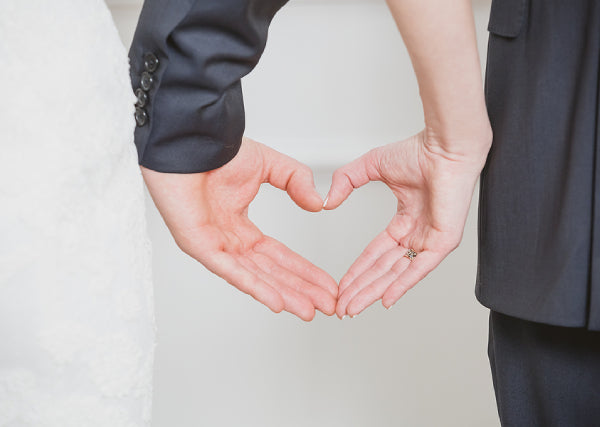
Love Languages, But Make It Jewelry: Finding the Ring For You
Imagine seeing your partner’s eyes light up—not just because of the sparkle on their finger but because the ring you chose seems to speak directly to their heart. That’s the magic of understanding love languages and translating them into jewelry. Choosing a ring isn’t only about style; it’s about connection, thoughtfulness and a touch of personality. For many couples, the ring becomes more than a piece of jewelry—it’s a symbol of how well you know each other, down to the smallest details.
Love Languages and Why Rings Matter
Dr. Gary Chapman’s five love languages—words of affirmation, acts of service, receiving gifts, quality time, and physical touch—have guided countless couples in deepening their relationships.
If you’re looking to buy an engagement ring in Singapore, these languages offer a surprising roadmap. A ring can speak volumes without a single word, encapsulating admiration, commitment, and understanding.
Rings are intimate, personal and enduring. They sit on your hand, a constant reminder of love, and with the right approach, they can perfectly mirror the way you give and receive affection. For instance, someone whose love language is receiving gifts might appreciate a ring that feels thoughtful, unique and carefully selected.
Understanding Your Partner’s Love Language
Love languages describe the ways people give and receive love. Understanding them can help you connect more deeply with your partner and choose gestures that feel meaningful. The five love languages are:
Words of Affirmation: Appreciates verbal expressions of love— encouragement, compliments and heartfelt messages.
Acts of Service: Values thoughtfulness and helpful actions that make life easier or more enjoyable.
Receiving Gifts: Feels loved when receiving tangible, thoughtful items that show you understand their tastes.
Quality Time: Thrives on shared experiences and meaningful moments together.
Physical Touch: Expresses and receives love through touch and closeness, appreciating tangible connections.
Knowing your partner’s primary love language can guide you in selecting gestures, gifts and experiences that truly resonate.
Translating Love Languages into Jewelry Choices
Once you have a grasp on love languages, it’s time to translate that into tangible options.
Words of Affirmation: Consider opting for bespoke jewelry. Even a tiny inscription on the inner band can hold significant emotional weight. Personalized touches demonstrate thoughtfulness and reinforce connection.
Acts of Service: Focus on practicality without compromising charm. Durable metals like platinum or titanium can withstand daily wear, while designs that reflect your partner’s daily life show consideration for their routines.
Receiving Gifts: This is the perfect moment to explore color and uniqueness. Colored gemstones—like sapphires, emeralds, or rubies—offer a vibrant twist that conveys thought and personality.
Quality Time: The shared experience can extend to customization sessions where couples design mutual engagement rings This approach adds a deeper layer of meaning than the ring itself.
Physical Touch: Rings with smooth, rounded profiles or tactile details can provide comfort and a subtle sense of connection, enhancing the emotional experience each time it’s worn.
Matching Ring Styles to Personality and Lifestyle
Personality and lifestyle play a significant role in finding a ring that feels natural. Someone with an active lifestyle might prefer low-profile settings that won’t snag, while a partner who loves fashion might enjoy statement pieces that reflect individuality.
Classic solitaire designs work beautifully for minimalists who appreciate timelessness. Halo or cluster settings can reflect someone who enjoys sparkle and intricate detailing. Vintage-inspired rings cater to those with nostalgia for history and romantic stories. Even considering daily routines—like whether they cook, travel frequently, or spend time outdoors—ensures the ring not only dazzles but is practical and wearable.
Practical Tips for Choosing the Right Ring Together
1. Start Conversations Early: Discuss preferences, lifestyles and inspirations well before selecting a ring. Even vague insights, like favorite colors or metals, can guide the process.
2. Consider the Setting: The metal, cut and band style should complement both personality and daily life. Metals like platinum, rose gold or white gold offer different vibes and maintenance levels.
3. Explore Customization: Custom or bespoke jewelry allows personalization that resonates with your partner’s love language and your shared story.
4. Think Long-Term: Choose durability and comfort, ensuring the ring can be worn daily without inconvenience.
5. Include a Touch of Surprise: Small details—a colored gemstone, hidden engraving, or unique setting—can make the ring feel uniquely theirs.
The key is blending practicality with emotional resonance. A thoughtful choice speaks louder than any trend or flashy design.
Conclusion: Making Your Ring a Symbol of Your Story
Rings aren’t just accessories—they’re narratives. When chosen with attention to love languages, personality and lifestyle, they become enduring symbols of a couple’s story. By understanding what makes your partner feel cherished, you can select a ring that reflects connection, thoughtfulness and shared history.
For couples ready to find a ring that truly tells their story, LeCaine offers bespoke options and unique designs, ensuring a piece as distinctive as your relationship. Begin your journey today and discover the engagement ring that captures your love perfectly—only at LeCaine.
22
Sep

The Gentleman’s Guide to Buying Her Dream Diamond Ring
So, you’ve decided it’s finally time to propose. Exciting, right? But now comes the part that can feel intimidating: choosing the ring. There’s size, shape, sparkle, and the whole world of diamonds to consider. Lab diamonds or mined? Classic or unique? It’s enough to make any guy second-guess himself.
The good news: you don’t need to be a diamond expert to make a smart choice. With a clear plan, careful observation, and a little guidance, you can pick a ring she’ll adore—and make your proposal unforgettable. Think of it this way: this is more than a piece of jewelry; it’s a symbol of your relationship, your commitment, and your thoughtfulness. Approaching it methodically can turn what feels like pressure into an exciting, rewarding process.
Step 1: Understand Her Style – Without Giving Anything Away
Before buying any ring, spend some time really noticing her style. Look at the jewelry she wears most: does she favor simple bands, delicate settings, or bold statement pieces? Notice the metals she prefers—white, yellow, rose gold, or platinum—and whether she gravitates toward geometric or rounded designs.
If you’re unsure, enlist the help of friends or family who know her taste well. They can provide subtle guidance without spoiling the surprise. You could also try checking out her Pinterest page—she might have a mood board for her dream ring. Choosing a ring that reflects her personal style will make it feel like the perfect fit the moment she sees it, rather than just another ring you picked.
Step 2: Diamonds Decoded – The 4 Cs Made Simple
Diamonds have a reputation for being complicated, but understanding the basics can make the process much easier. The 4 Cs—cut, color, clarity, and carat—are your roadmap:
Cut: Determines how much light the diamond reflects. A well-cut diamond sparkles more, even if it’s smaller in size.
Color: Measures the diamond’s whiteness. Look for stones that appear bright and clean to the eye.
Clarity: Indicates internal flaws. Most imperfections are invisible to the naked eye, so a slightly lower clarity can save money without sacrificing beauty.
Carat: Refers to size, but bigger isn’t always better. A perfectly cut stone of slightly smaller carat can appear more impressive than a larger stone with a poor cut.
Focusing on what’s visually appealing rather than memorizing every technical detail ensures you pick a diamond that dazzles her without overwhelming yourself with jargon.
Step 3: Shape, Size, and Sparkle – What Really Makes a Statement
The shape of the diamond significantly affects the ring’s look. Popular options include round, princess, oval, cushion, and pear. Each shape has its own character and can complement different hand shapes differently.
Size matters, but sparkle matters more. When planning to buy a 1-carat diamond ring, it’s important to balance shape, size, and brilliance. A well-cut diamond can appear larger and brighter than a bigger stone with a lower-quality cut. Consider practicality too: high-set rings or very large stones might catch on clothing or be uncomfortable for daily wear. Aim for a balance of shape, size, and brilliance that complements her lifestyle while making the ring feel like it was made for her.
Step 4: Lab Diamonds vs. Mined Diamonds – The Modern Man’s Dilemma
Lab diamonds offer the same physical and chemical properties as mined diamonds but often at a lower price point. They’re also produced ethically, reducing environmental and social concerns associated with mining.
Choosing between lab diamonds and mined diamonds depends on your values, budget, and taste. Lab diamonds can allow you to select a larger or higher-quality stone for the same investment, while mined diamonds carry a classic, traditional appeal. Knowing both options helps you make a confident choice that aligns with both your financial plan and her preferences.
Step 5: Timing Your Proposal – How to Make It Memorable, Not Awkward
Timing is crucial. Consider significant dates in your relationship, seasonal settings, or moments that naturally feel intimate. A proposal that coincides with a meaningful occasion amplifies the impact of the ring and makes the memory last.
The location matters too: whether you’re planning a private dinner, a scenic getaway, or a special spot that holds sentimental value, choose a setting that fits her personality. Small touches—like incorporating a family tradition, favorite flowers, or meaningful music—can turn a beautiful ring into an unforgettable experience.
Step 6: Avoid Epic Fails – Common Mistakes (And How to Dodge Them)
Even with careful planning, it’s easy to stumble. Some common mistakes include:
Guessing the wrong ring size. Sneak a measurement from an existing ring or ask friends discreetly.
Ignoring her style. A ring that doesn’t match her taste may disappoint.
Rushing the decision. Take time to explore, compare, and even consider customization.
Adding a personal touch like an engraving or integrating a family heirloom element makes the ring unique and emotionally resonant. Don’t chase trends—choose a design that speaks to your relationship. Planning thoughtfully ensures your investment is cherished, not just admired.
Conclusion: Confident Choices, Happy Fiancée, No Regrets
Buying her dream diamond ring is more than picking a gemstone—it’s about creating a lasting memory. From noticing her style to understanding diamonds, choosing the right shape and size, and deciding between lab diamonds or mined stones, every detail matters.
At LeCaine, you’ll find expert guidance and a curated selection designed to make this process simple and confident. Whether you’re ready to buy a 1-carat diamond ring or explore lab diamonds, our team ensures you select a piece that reflects her taste, your commitment, and your shared values. Thoughtful details, ethical choices, and timeless designs make your proposal unforgettable. With LeCaine, you’ll feel confident, she’ll be thrilled, and both of you will have a story to cherish for a lifetime.
16
Sep
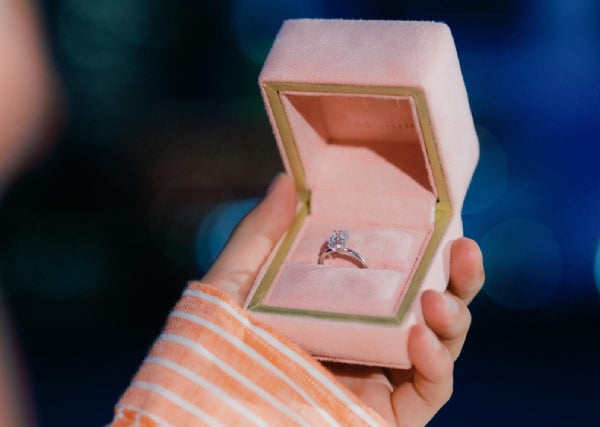
Why the Ring Should Be as Thoughtful as Your Proposal
Proposing is one of life’s most memorable moments. Every detail—from the setting to the words you choose—contributes to a memory that lasts forever. Among all the elements of a proposal, the ring carries perhaps the most emotional weight. It’s more than just a piece of jewelry; it’s the first tangible symbol of your commitment. Choosing the right ring sends a message that you understand her, your relationship, and the life you’re promising to share. A thoughtful ring doesn’t just sparkle—it tells a story, capturing your shared journey and the love you’ve built together. Taking the time to understand her taste, lifestyle, and values ensures that your ring becomes a cherished part of her life, rather than a fleeting accessory.
The Emotional Weight of the Ring
A proposal ring is a lifelong keepsake. Every time she looks at it, she should feel the thought and care you put into choosing it. That emotional connection transforms the ring from a beautiful accessory into a powerful symbol of love. Lab-made diamond rings, for example, offer exceptional brilliance while reflecting modern values like sustainability and ethical sourcing. By choosing a ring that aligns with her values, you’re signaling that you understand what matters to her and are willing to honor those principles. The emotional impact goes beyond the sparkle—knowing her beliefs and incorporating them into your choice can make the ring truly unforgettable, strengthening the bond between you.
A Reflection of Her Style: How a Ring Shows You Truly Know Her
When selecting a ring, it’s essential to go beyond generic preferences and consider her unique style. Observe her everyday jewelry—does she prefer delicate, understated pieces, or bold, statement-making designs? Does she lean toward vintage-inspired looks, or are modern and geometric styles more her thing? Even subtle details, like the metals she favors—platinum, yellow gold, or rose gold—can guide your choice. A ring that mirrors her personal style is a way of saying, “I see you, and I know what makes you shine.” When she wears a ring that aligns perfectly with her tastes, it demonstrates thoughtfulness and attention to detail, showing that you’ve paid close attention to her individuality.
A Representation of Your Relationship: Choosing Something Meaningful, Not Generic
A ring should represent your shared story. Think about the moments, experiences, and milestones that define your relationship. Perhaps a gemstone color reminds you of a trip you took together, or a specific design reflects an inside joke or cherished memory. Custom engravings, hidden gems, or heirloom elements can transform a ring into a symbol of your unique bond. Choosing a generic ring might look beautiful, but it won’t carry the same emotional significance. A meaningful ring tells the story of your love in a way that only the two of you fully understand, making every glance at the ring a reminder of your journey together.
Longevity Matters: Selecting a Ring That She’ll Love Wearing Forever
The best proposal rings are not just for the moment—they’re for a lifetime. When choosing a ring, consider her daily life and habits. Is she hands-on in her career or hobbies, requiring a more practical design? Does she prefer rings that make a statement, or does she enjoy subtle, timeless pieces? Lab-made diamond rings offer incredible durability while maintaining brilliance, making them a reliable choice for everyday wear. Selecting a ring with longevity in mind ensures it remains a source of joy and pride for years to come, combining practicality with timeless style that she can carry through every chapter of her life.
Emotional Connection: How a Thoughtful Ring Adds Depth to the Proposal
A ring that reflects thoughtfulness deepens the emotional impact of your proposal. Every glance at the ring should evoke a sense of connection and warmth. Consider incorporating subtle details, like a stone or design element that recalls a special moment in your relationship. These layers of meaning can make the ring feel personal and intimate, turning it into a daily reminder of your love. The emotional resonance of a carefully chosen ring extends beyond the proposal itself—it becomes part of her identity, a symbol she proudly wears, and a constant reflection of your commitment and care.
Customization and Personal Touches: Engravings, Heirloom Elements, or Unique Designs
Customization elevates a ring from beautiful to extraordinary. Personalized details—such as engraved messages, hidden gems, or the inclusion of a family heirloom—add depth and sentiment that mass-produced rings cannot match. Engravings can commemorate dates, initials, or private sentiments that only the two of you understand, creating an intimate connection. Incorporating elements from heirlooms links your relationship to family history, adding richness and tradition. Unique designs, like unconventional settings or colored gemstones, give the ring a one-of-a-kind quality that makes it unmistakably hers. Thoughtful custom touches show effort, creativity, and devotion, making the ring more than jewelry—it becomes a cherished symbol of your love.
Conclusion: Making the Ring a Symbol of Your Love Story
A proposal ring should be a tangible expression of your love story. The right ring mirrors her style, encapsulates your shared journey, and combines beauty with durability. Thoughtful details, customization, and sustainable choices like lab-made diamond rings turn a stunning piece of jewelry into a meaningful symbol of commitment.
Finding the perfect ring doesn’t have to be overwhelming. At LeCaine, you can explore a carefully curated collection of rings designed to inspire and delight. Every piece blends timeless craftsmanship with modern sensibilities, ensuring that your choice reflects individuality, emotion, and enduring quality.
From lab-made diamond rings that honor ethical values to fully customizable designs that celebrate your unique love story, LeCaine provides guidance and inspiration to help you find a ring that speaks to her heart. By choosing a ring with intention and care, you’re not just selecting jewelry—you’re creating a memory, a daily symbol of devotion, and a lasting testament to the love you share.
10
Sep
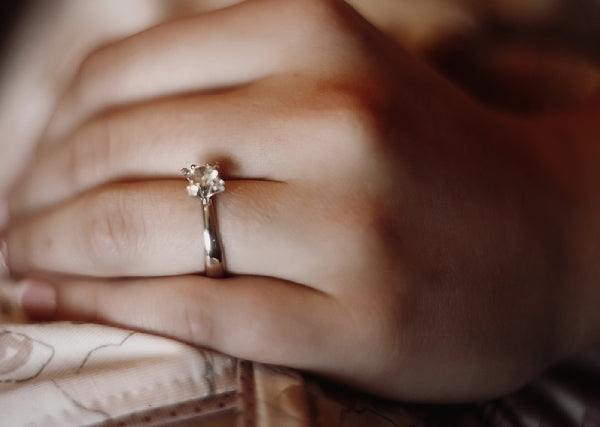
1 Carat, Infinite Stories: Picking a Ring That Speaks to You
Shopping for an engagement ring is one of those magical milestones that carries both excitement and meaning. There’s the anticipation of finding the one—the ring that perfectly captures your love story—and the thrill of seeing how each diamond sparkles under the light. Among all the options, the 1-carat diamond ring has become the classic choice.
It’s not too large to feel overwhelming, yet it’s substantial enough to make a lasting impression. For many couples, the journey to buy a 1-carat diamond ring designs begins with the idea of balance: beauty, value, and symbolism wrapped into a single, timeless piece. And while a carat might sound like just a measurement, in reality, it holds far more—it represents the sweet spot where practicality meets magic.
Why 1-Carat Is More Than Just a Number
Think of “1-carat” not as a statistic but as a milestone. It’s the benchmark that many couples aim for when starting their search. A 1-carat diamond has cultural weight—it’s considered the standard that signifies enduring love and commitment. It’s not excessive, yet it feels significant enough to carry meaning.
Many jewelers note that couples who choose this size often do so because they see it as timeless—it won’t go out of style or feel impractical later. In fact, a 1-carat ring has remained one of the most requested sizes for decades, precisely because it strikes the perfect balance between presence and wearability.
The Magic of 1-Carat: Size, Brilliance, and Visual Impact
The real magic of a 1-carat diamond lies in how it sparkles. When cut well, this stone has an ability to throw light in a way that feels almost hypnotic. Its facets capture and reflect brilliance in a way that makes it look luminous, no matter the setting.
What surprises many people is how noticeable it actually is. On the hand, a 1-carat diamond has the kind of presence that gets attention across the table at dinner, yet it never feels too bold for everyday life. It’s a diamond that moves effortlessly between casual days and extraordinary moments—work meetings, weekends, and of course, the proposal itself.
Perception Vs. Reality: Why 1-Carat Isn’t “Small”
There’s a common misconception that anything under 2 carats might not feel impactful—but the truth is very different. A well-cut 1-carat diamond can often appear larger than its weight suggests, especially when paired with a setting designed to maximize its shine.
Think of a solitaire on a slim, delicate band—the diamond immediately becomes the star of the show. Or imagine a halo setting, where smaller diamonds encircle the center stone, creating the illusion of a larger piece without the jump in price. Even finger shape plays a role; long, slender fingers tend to make a 1-carat stone look even more striking.
So, the reality is clear: a 1-carat diamond doesn’t need to be “big” to be powerful. Its beauty lies in proportion, light, and design.
4 Cs in Action: How Cut, Clarity, and Color Enhance a 1-Carat Diamond
Understanding the 4Cs is essential to choosing the perfect diamond. Carat weight might get all the attention, but it’s the other 3 Cs—cut, clarity, and color—that decide how breathtaking a diamond really looks. For a 1-carat stone, this is especially true, because the details matter.
Cut: A perfectly cut diamond reflects light in dazzling ways, making it appear brighter and sometimes larger than stones of the same weight.
Clarity: Most 1-carat diamonds fall into ranges where inclusions aren’t visible to the naked eye, but choosing wisely ensures the stone looks flawless up close and in photos.
Color: Diamonds are graded on how white or tinted they are. A well-chosen color grade means your 1-carat stone will look fresh, radiant, and icy-white.
The beauty of focusing on these qualities is that they allow you to maximize value. Instead of chasing higher carat weights, prioritizing cut and clarity gives you a ring that sparkles brighter than you ever imagined.
Style and Personality: Ring Designs That Maximize the Impact of 1 Carat
One of the best things about a 1-carat diamond is its versatility—it looks stunning in nearly every type of setting. Solitaires highlight its natural beauty, while halo settings add volume and drama. For those who love something unique, vintage-inspired designs with intricate detailing offer character, while sleek contemporary bands create a clean, modern vibe.
Your choice of metal also plays a role. Platinum and white gold enhance brightness, yellow gold adds warmth, and rose gold gives a romantic, modern twist. A 1-carat stone adapts beautifully to all of them, which is why it’s such a beloved choice for couples with different tastes.
Custom Touches: Personalizing a 1-Carat Ring to Tell Her Story
What turns a ring from “beautiful” into “irreplaceable” are the personal touches. Small details—like engraving initials, a favorite quote, or a meaningful date inside the band—make the ring a story in itself. Some couples choose to add hidden gemstones, like a birthstone, tucked under the setting where only the two of you know it exists.
Others might choose side stones to frame the diamond, or play with mixed-metal bands for a one-of-a-kind look. Each of these choices transforms the ring into something more than jewelry—it becomes a reflection of her personality, your relationship, and the little quirks that make your love unique.
Conclusion: How a 1 Carat Diamond Can Symbolize Big Love
A 1-carat diamond ring proves that significance isn’t measured in size, but in meaning. With the right cut, thoughtful design, and personal touches, it becomes more than a piece of jewelry—it becomes an heirloom of love, carried through every chapter of life.
At LeCaine, our collection offers everything from timeless solitaires to contemporary creations, with the option to customize details so the ring truly tells your story. Our experts guide you through the 4 Cs, settings, and personalization options, making the process exciting and stress-free.
When you choose LeCaine, you’re not just purchasing a ring—you’re creating a symbol of your journey, your values, and your forever. Explore our diamond rings today, and let us help you craft the piece that will carry your love story for a lifetime.
02
Sep
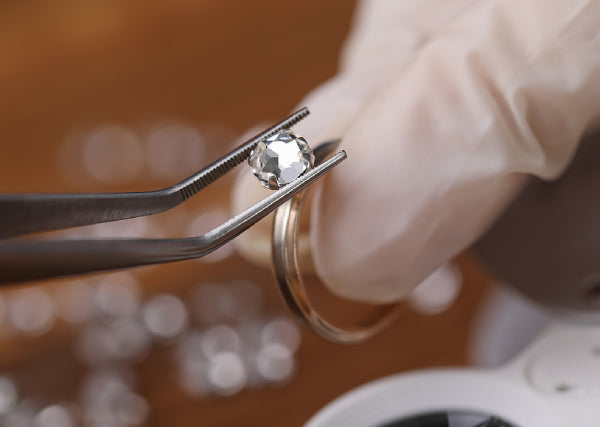
From Lab to Finger: The Journey of a Modern Diamond Ring
Picture this: you’re holding a diamond in your hand. Sunlight catches its facets, scattering tiny rainbows across the table. But this isn’t just any diamond—it’s a lab diamond, born not deep underground but in a high-tech lab where science and artistry collide. For today’s couples, lab diamonds are changing everything about engagement rings. They shine just as brightly as mined diamonds, yet come with a story that matches the values of modern love. From the first spark of the crystal to the moment it slips onto a finger, the journey of a lab diamond is as fascinating as the romance it celebrates.
Why Lab Diamonds Are Changing the Game
So why are lab diamonds creating such a buzz?
Think of them as the perfect mix of beauty and conscience. These diamonds have the same chemical makeup as mined stones, meaning they sparkle with the same fire and brilliance—but without the ethical and environmental concerns that sometimes accompany traditional mining.
For couples who care about the planet and the world around them, lab diamonds are not just a stunning choice—they’re changing engagement traditions. It’s about more than owning a gorgeous gem; it’s about making a statement that reflects your values.
The Birth of a Lab Diamond: Where Science Meets Sparkle
Creating a lab diamond is like watching magic in slow motion. Using methods like High Pressure High Temperature (HPHT) or Chemical Vapor Deposition (CVD), scientists recreate the extreme conditions that make natural diamonds. Over weeks or months, carbon atoms arrange themselves into perfect crystals, forming a diamond that could have spent millions of years in the Earth—but didn’t have to.
Every stone begins as a tiny crystal and grows, patiently, until it’s ready to be cut into a jewel. It’s science, but it’s also a little romantic, don’t you think?
Cutting, Polishing, and Perfecting: Turning a Crystal Into a Gem
Once the crystal is ready, it’s time for the artisans to work their magic. Cutting a diamond isn’t just about precision—it’s about understanding how light moves, how facets reflect brilliance, and how every angle can enhance the gem’s sparkle. Polishing reveals the inner fire, transforming a rough crystal into a gem that almost seems alive. Even a lab diamond, created in a controlled environment, requires this human touch to truly shine. Hence, not all lab-grown diamonds are the same. We curate only with the best cutters and polishers. It’s a delicate dance of science and artistry—and the result is nothing short of mesmerizing.
Choosing the Right Lab Diamond Ring
Finding the perfect lab diamond ring isn’t just about the diamond—it’s about finding a piece that feels like you. Start by thinking about style: do you love classic simplicity, or are you drawn to rings with unique details and personality? The right band, setting, and metal can completely transform the look of a stone, so it’s worth exploring a few options.
Next, consider the 4 Cs: cut, color, clarity, and carat. While lab diamonds have incredible quality, understanding these factors helps you choose a stone that maximizes sparkle and fits your budget. A well-cut diamond can dazzle even at smaller sizes, while the right color and clarity ensure your ring looks flawless from every angle.
Finally, imagine it on the finger of your loved one. How does it reflect their personality? How does it feel when they wear it every day? The best lab-made diamond rings aren’t just beautiful—they feel right in every way, capturing both the brilliance of the gem and the essence of your relationship.
Shapes and Styles: Choosing a Lab Diamond That Reflects Personality
Round, oval, cushion, emerald, princess—each shape tells its own story. A round diamond says “classic romance,” while a cushion or oval adds a touch of personality and softness. Emerald and princess cuts make a bold statement with clean, modern lines. The right shape can highlight the diamond’s brilliance and complement the wearer’s hand beautifully. And in today’s world, many couples are choosing unexpected shapes or personalized designs that reflect their unique style and love story.
Ethical and Environmental Impact: Why It Matters
Here’s the part that makes lab diamonds even more special: choosing them is a conscious decision. Mining diamonds can disrupt ecosystems, create carbon emissions, and sometimes involve questionable labor practices. Lab-grown diamonds have a fraction of that impact and are guaranteed conflict-free. Picking a lab diamond isn’t just about sparkle—it’s about making a choice you can feel proud of, knowing your ring reflects your values. Love doesn’t have to cost the Earth, and lab diamonds prove it.
Caring for Your Lab Diamond
Even though it’s grown in a lab, your diamond deserves the same care as any other. Simple practices—gentle cleaning, avoiding harsh chemicals, and occasional inspections—keep it looking breathtaking for years. It’s reassuring to know that the brilliance you fall in love with today will still shine decades from now, catching sunlight and memories alike.
From Purchase to Proposal: How a Lab Diamond Becomes a Symbol
Think of the proposal moment—the nerves, the excitement, the sparkle in your partner’s eyes. That lab diamond, born in a lab and perfected by artisans, suddenly becomes so much more. It’s not just a gem; it’s a symbol of thoughtfulness, care, and commitment. Every facet reflects intention, every sparkle a memory. In that instant, the diamond transforms into a promise, a piece of your love story captured in crystal form.
Conclusion: Modern Love, Modern Sparkle
Lab diamonds are changing how we think about love, luxury, and responsibility. From the lab to the hand of someone you love, they combine brilliance, conscience, and timeless appeal.
At LeCaine, we believe every ring should tell a story. That’s why our lab diamond collection pairs stunning design with modern values. From classic solitaires to contemporary statement pieces, each ring is carefully curated to help you celebrate love the way you want.
Discover the collection at LeCaine and experience how lab diamonds can turn your dream ring into a reality. With our guidance, your choice isn’t just about a diamond—it’s about expressing your story, your values, and your style in a piece that will be treasured for a lifetime.
25
Aug
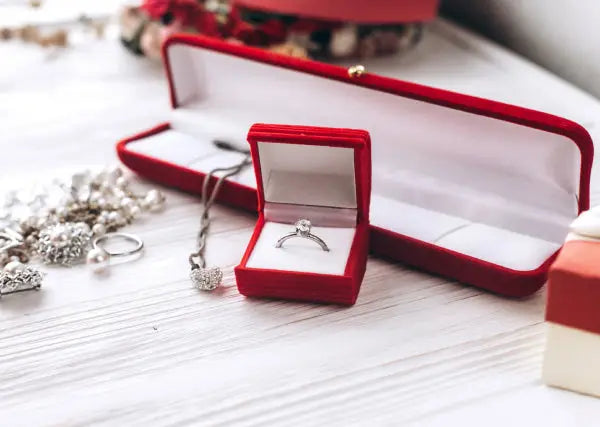
Not Just for Moms Anymore: Why Si Dian Jin Is Back on Trend
Once tucked away in tradition and reserved for the wedding day, Si Dian Jin is stepping back into the spotlight. Only this time, it’s redefining what modern bridal jewelry can be. Today’s brides aren’t just accepting this four-piece set as a cultural obligation; they’re embracing it as a powerful style statement and a meaningful nod to their roots.
From minimalist revamps to lab-grown diamonds in Singapore, Si Dian Jin is getting a fresh makeover—and younger generations can’t get enough. If you thought this heritage set was old-fashioned, think again. Si Dian Jin is back, and it’s cooler than ever.
Si Dian Jin’s Cultural Significance
Si Dian Jin, which translates to “Four Touches of Gold,” traditionally includes a necklace, a pair of earrings, a ring, and a bangle. This set is important in Chinese weddings as it is given by the groom’s family as a blessing and a symbol of welcome. Each piece represents completeness, protection, and prosperity in marriage. Although originally tied to Teochew customs, the practice has since been adopted by other dialect groups and remains a meaningful way to honor one’s roots.
A Brief History: From Tradition to Today
Historically, Si Dian Jin was synonymous with ornate 24K yellow gold designs, often heavy with auspicious motifs like dragons, phoenixes, or floral patterns. While beautiful, these styles didn’t always resonate with the personal tastes of younger brides, and for a time, the practice saw a decline.
However, instead of disappearing, Si Dian Jin has evolved. Today, designers are breathing new life into these heirloom-inspired pieces, fusing contemporary aesthetics with traditional symbolism. The result? Jewelry that feels both relevant and reverent.
Why Millennials and Gen Z Brides Are Embracing It
Younger brides are more interested in meaningful purchases than ever before, and Si Dian Jin offers the perfect mix of sentiment, symbolism, and style. Many see it not as an obligation, but as a bridge between generations. It’s a way to honor their elders while expressing their individuality.
Practicality also plays a role. Unlike purely ceremonial items, modern Si Dian Jin is designed for everyday wear. Brides want jewelry they can use long after the wedding day, pieces that become part of their identity, not just their wedding album.
And let’s not overlook the rising importance of ethical sourcing. More brides today are choosing lab-grown diamonds for their Si Dian Jin sets, blending sustainability with tradition in a way that feels both modern and meaningful.
Modern Si Dian Jin Designs That Break the Mold
Today’s Si Dian Jin designs are lighter, more versatile, and aesthetically aligned with modern fashion. Delicate bangles replace bulky ones, geometric earrings take the place of ornate studs, and lab-grown diamond rings offer a modern twist on timeless tradition.
White gold, rose gold, and even mixed metals are now commonplace. Brides are increasingly choosing minimalist or modular sets that can be stacked, layered, or worn individually, depending on the occasion.
Customization is also key. Brides are asking for initials, birthstones, and unique engravings to make their Si Dian Jin sets truly one of a kind.
How Brands Are Reinventing Si Dian Jin for New Generations
Jewelry brands are taking note of this revival. Designers now offer Si Dian Jin collections that honor the past while appealing to modern sensibilities. Instead of mass-produced sets, there’s a growing focus on artisanal craftsmanship, personalization, and sustainable materials.
At LeCaine, you’ll find a curated selection of modern Si Dian Jin styles crafted with ethical stones, including lab-grown options. This forward-thinking approach allows brides to align cultural traditions with modern values, creating a harmonious fusion that resonates with today’s audience.
Styling Si Dian Jin Beyond the Wedding Day
One of the most compelling aspects of today’s Si Dian Jin is its versatility. Brides are styling their wedding jewelry with workwear, weekend outfits, and even street fashion. A simple bangle can elevate a minimalist look, while a fine pendant necklace adds polish to casual ensembles.
Layering, stacking, and mixing are encouraged, and gone are the days of saving Si Dian Jin for special occasions only. Now, it’s a staple in the modern woman’s wardrobe, carrying personal significance every time it’s worn.
Conclusion: Honoring the Past, Reimagined for the Future
Si Dian Jin has moved far beyond its traditional boundaries. It’s now a meaningful and modern symbol of love, heritage, and personal identity. With updated designs, sustainable practices like lab-grown diamonds, and fresh ways to wear each piece, Si Dian Jin is capturing the hearts of a new generation.
At LeCaine, we celebrate this evolution by offering contemporary Si Dian Jin sets that balance heritage with innovation. Because tradition, when reimagined with care, never goes out of style.
20
Aug
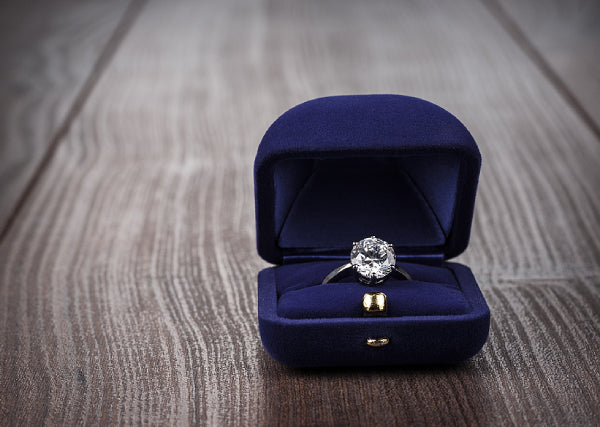
5 Game-Changing Engagement Ring Trends You Didn’t See Coming
Forget everything you thought you knew about engagement rings. Today’s love stories are bold, unique, and breaking all the old rules—and so are the rings. From bold design choices to ethically sourced stones, engagement rings have become deeply personal statements of love, identity, and modern values.
The Evolving Language of the Engagement Ring
An engagement ring is more than just a symbol of commitment; it’s an expression of personal style, a celebration of love, and now, a reflection of modern values. As more couples seek meaningful, sustainable, and distinctive options, designers are responding with bold innovations that reflect how relationships have evolved.
Thinking of proposing or helping someone drop hints? If you're looking to buy an engagement ring that’s anything but predictable, these five trends will give you serious inspiration. It’s time to leave cookie-cutter sparkle behind and explore what’s next, because the future of commitment looks refreshingly different.
1. Lab-Grown Diamonds Stealing the Spotlight
As sustainability and ethics become key purchasing drivers, lab-grown diamonds in Singapore are fast gaining traction. Visually indistinguishable from their mined counterparts, these diamonds offer transparency in sourcing and a significantly lower environmental impact. But beyond the eco-conscious appeal, lab-grown diamonds are also more budget-friendly, allowing couples to afford larger stones or higher-quality settings.
Modern brides and grooms are seeking beauty with integrity, and lab-grown diamonds check all the right boxes. This shift has led many to buy an engagement ring that reflects not only their love story but also their values—a ring that feels as good to wear as it looks.
2. Colorful Gemstones Are Replacing Classic Diamonds
While diamonds still hold iconic status, more couples are gravitating toward colorful center stones. Think teal sapphires, rich emeralds, and colored moissanites. These vibrant alternatives add personality and flair to a piece that’s meant to be one of a kind.
In many ways, gemstone rings reflect a desire to stand out in a world filled with cookie-cutter designs. They tell a more specific story—one that may be tied to a birthstone, cultural meaning, or simply a favorite hue. Color has become a new form of symbolism, and it’s transforming engagement ring aesthetics across the board.
3. Gender-Neutral and Matching Couple Rings
The rise of gender-inclusive jewelry is influencing how engagement rings are designed and marketed. Gone are the days when only one partner wore a ring during the engagement. Today, many couples choose matching or coordinating rings to mark their mutual commitment.
Designs that defy traditional masculinity or femininity are gaining popularity, as are bands that prioritize shared values over rigid style categories. Minimalist bands with subtle custom touches are especially beloved by couples looking for something deeply meaningful yet understated.
4. Asymmetrical and Freeform Ring Designs
Symmetry used to be the standard, but asymmetry is now embraced as a bold and beautiful choice. From off-center settings to mismatched side stones and organic silhouettes, freeform designs offer a refreshing way to celebrate uniqueness and individuality.
Jewelry designers are playing more with negative space, texture, and geometry to create rings that look different from every angle. These designs are not just artistic, they’re symbolic. They embrace imperfection, echoing the truth that love is rarely perfect, but always beautiful.
5. Mixed Metals and Unexpected Materials
Yellow gold, white gold, and platinum no longer dominate the ring world alone. Instead, designers are incorporating combinations of metals, such as rose gold with platinum accents, for contrast and warmth. More avant-garde rings are even integrating materials like ceramic, titanium, and wood.
This trend reflects a growing appetite for the unexpected. When couples decide to buy an engagement ring, they’re no longer limited to conventional choices. They’re looking for materials that align with their lifestyle, skin tone, and fashion preferences—and aren’t afraid to mix it up.
How These Trends Reflect Modern Love Stories
Each of these trends reflects more than just changing tastes; they mirror how relationships themselves are evolving. Today’s couples want rings that celebrate their individuality, values, and shared journeys. They’re unafraid to question tradition and make design choices that are rooted in authenticity.
What once had to be classic now has the freedom to be creative. What once followed rules now follows the heart. And that’s the most meaningful trend of all.
Conclusion: It’s Time to Rethink the Ring
The engagement ring has entered a new era defined by personal expression, ethical considerations, and boundary-pushing design. Whether it’s the rise of lab-grown diamonds in Singapore, the shift toward colorful stones, or the celebration of asymmetry and nontraditional materials, these trends invite us to reimagine what an engagement ring can be.
At LeCaine, you’ll find a curated collection of contemporary and customizable designs that embody these changes. It’s time to celebrate your story with a ring as unique as your love.
13
Aug
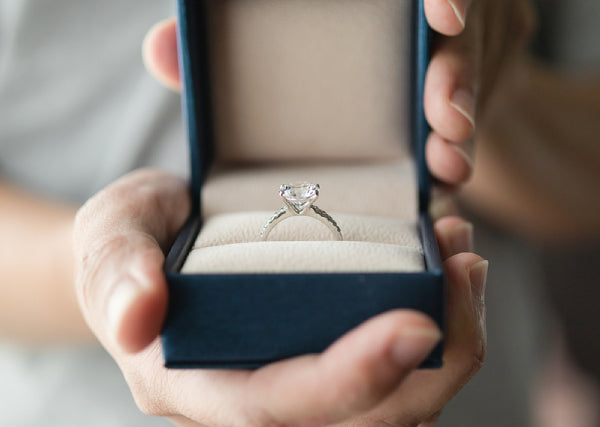
“We Proposed to Each Other”: Rise of Mutual Engagement Rings
Once upon a time, engagements followed a familiar script—one partner, usually the man, would surprise the other with a ring and a proposal. But love, like everything else, evolves.
Today, many couples are proposing to each other, embracing the idea of shared milestones and removing the pressure of “who asks first.” This shift reflects deeper changes in societal norms, and it’s revolutionizing how we approach the commitment of marriage.
From joint proposal planning to shopping for rings together, couples are rewriting the rules of engagement. And thanks to options like lab-grown diamond rings, it’s never been easier to express love in a way that’s ethical, intentional, and truly shared.
Redefining Proposals in Modern Love
Gone are the days when a proposal had to follow a strict script. Modern couples want their journey to reflect who they are, not a tradition they don’t connect with.
Mutual engagement rings are one way couples are choosing to express equality. It's not about making a moment less special; it’s about making it more authentic. Now, both partners get to participate, express their love, and wear a symbol of commitment.
The Shift from Traditional to Mutual Engagements
This movement isn't just about who pops the question. It's about redefining the entire proposal experience. These days, more couples are heading to jewelry stores together, excited to buy an engagement ring that reflects both their styles and values.
Instead of keeping the ring a surprise, couples enjoy selecting designs, trying them on, and customizing them to suit each other. This collaborative approach ensures that the engagement is not only romantic but also practical, stress-free, and reflective of shared values.
Why Couples Are Choosing to Propose Together
So why are mutual proposals becoming more common? Here’s what’s driving the shift:
Partnership: Both people want to be equally involved in the next chapter of their lives.
Meaningful Rituals: Proposing to each other deepens the emotional significance of the commitment.
Inclusivity: Mutual proposals are especially meaningful for same-sex couples or those who don’t fit into traditional gender roles.
Shared Style: Shopping together ensures that both rings reflect each person’s tastes and personalities.
More couples now say, “We proposed to each other”—and for many, it feels like the most honest and joyful way to mark their engagement.
How Mutual Ring Shopping Reflects Relationship Equality
Shopping for rings as a couple fosters open communication about budget, preferences, lifestyle, and long-term values. It encourages transparency and strengthens the bond long before the vows.
Choosing rings together also removes the guesswork and avoids awkward resizing or mismatched styles. For couples seeking quality and sustainability, lab-grown diamonds offer a perfect solution. They are just as romantic as natural ones and deliver the same sparkle while aligning with modern ethical standards.
By participating in the process as equals, couples create a ritual that’s collaborative, memorable, and completely their own.
Lab Grown Diamonds: The Ethical Choice for Mutual Rings
One of the most important parts of the engagement ring decision is the choice of diamond. Increasingly, couples are turning to lab-grown diamond rings for their beauty, value, and transparency.
Lab-grown diamonds are chemically identical to mined ones, but they’re created through a more sustainable process—without environmental damage or unethical labor practices. This makes them especially appealing to modern couples who want their love story to be built on integrity.
When you buy an engagement ring that’s lab-grown, you’re making a powerful statement: that your values matter just as much as the symbolism of the ring itself.
The Future of Proposals: Beyond Gender Norms
Mutual engagement rings aren’t just a trend; they’re part of a larger cultural shift. As society becomes more inclusive and gender norms continue to evolve, couples are embracing new ways to express their commitment.
From proposing at the same time to exchanging rings in private, couples are finding joy in making the moment their own. It’s no longer about tradition for tradition’s sake—it’s about meaning, connection, and shared joy.
The engagement ring, once a symbol from one person to another, is now becoming a shared icon of love.
Conclusion: Love, Evolved — and Sparkling on Both Sides
Mutual engagement rings mark a new era in love—one where equality, intention, and shared values take center stage. It’s about starting your future together, from the very first “yes.”
For couples ready to celebrate their love with something meaningful, explore LeCaine’s collection of lab-grown diamond rings. Thoughtfully crafted and ethically sourced, these rings are designed to reflect modern relationships—where love shines equally on both sides. Begin your journey with a ring that represents who you are and the future you're building together.
 Skip to main content
Skip to main content

